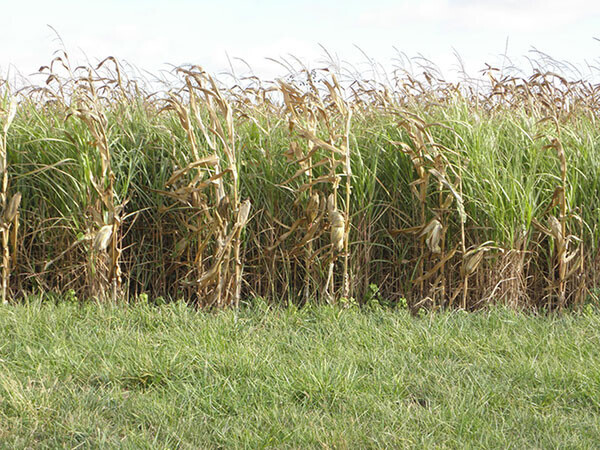The need for a rapid reduction in greenhouse gases is well known, and bioenergy is one of the possible solutions. The new perennial grass crop Miscanthus is particularly promising for bioenergy, as it is hardy, fast growing and efficient in its use of water.
Miscanthus is the name of a group of perennial grasses native to Asia and Africa, and first introduced into the UK as an ornamental plant in the 19th century. The type most commonly grown for biomass is a sterile hybrid (called Miscanthus x giganteus), which, once established, grows 3-metre woody canes each summer.
Yields of Miscanthus cane from mature crops are typically 12-20 tonnes dry matter per hectare per year in temperate Europe. Yields in the USA (Illinois) have been recorded at over 40 tonnes.
The energy content of the cane is typically 17 MJ per kg of dry matter, similar to wood but with higher silicon content.
When the potential for specific energy crops was examined, one of the key issues was that the energy expended in growing them should be less than for conventional arable crops. This is helped if the energy crops have low requirements for fertilizers, pesticides and other agrochemicals, as these consume large amounts of fossil energy in their manufacture. Low machinery costs are also desirable, and perennial crops have an advantage as annual soil cultivations are not needed. The energy and carbon savings of growing perennial energy crops in countries such as the UK can be considerable.
There is considerable interest in the use of switchgrass and Miscanthus for ethanol production, particularly in the United States. Both crops are C4 pathway perennial grasses, and although switchgrass is native to the North American prairies, Miscanthus appears to be higher yielding, at least in some of the northern states including Illinois, according to work done at the University of Illinois.
To date the UK appears to have the main stocks of biomass-quality Miscanthus rhizomes in Europe. To capitalize, BICAL has set up subsidiary companies in France and Ireland with trading partners, operating under the BICAL identity. The company is also active in Germany, Austria, Italy, Spain and Poland. Other companies, including ADAS Consulting Ltd are also active in some countries in a consultancy or supply role.
In France, INRA, the government research organization, has set up a development programme for cellulosic biomass ethanol crops, and Miscanthus plays a major role in this. Meanwhile BICAL France is actively recruiting growers for a range of end uses, including co-firing, over most of the country.
Early work in Germany, particularly in Bavaria, gave very high yields, but progress was set back by winter hardiness problems with small tissue-cultured plants not surviving the first winter. Now however a number of farmers and businesses are actively developing the crop. Germany has always had considerable expertise in the development of liquid fuel alternatives to gasoline, and seems likely to continue to lead in this area.
In Ireland the government has recently announced its intention to set up an energy crop establishment support scheme, with EU funding for willow SRC and Miscanthus planting. Possible uses would be the conversion of the current peat burning fluidized bed power stations to biomass, at least in part, and there are also possibilities to co-fire Miscanthus with coal in large modern plants. Both uses would improve carbon mitigation. Ireland’s pastureland produces heavy emissions of methane from the ruminant livestock. There are possibilities for profitable conversion of this land to Miscanthus for energy cropping with concurrent reductions in GHG emissions, and good soil carbon sequestration potential.
In the Ukraine, Miscanthus is being planted on a 5000 ha energy park, but little other information is currently available.
Achievement of these requirements, with Miscanthus, will be difficult, due to the shortage of Miscanthus rhizome for planting currently available in the USA. However with sufficient government determination towards liquid fuel self- sufficiency, and increasing awareness of the need for carbon mitigation, these targets could be reached.
For more information visit: https://www.renewableenergyworld.com


